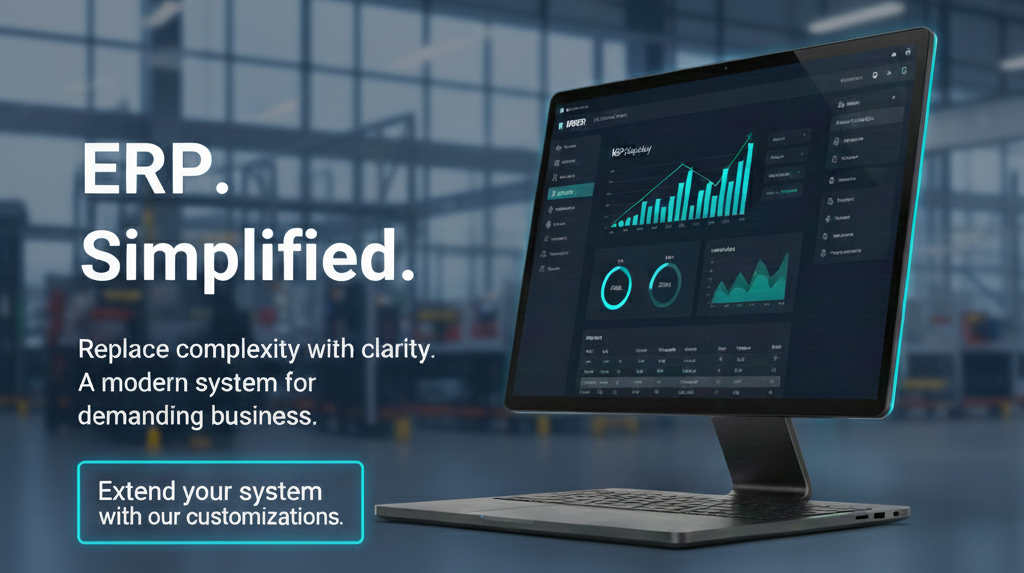Introduction
The role of an IFS Cloud Supply Chain Management (SCM) Product Owner is pivotal in ensuring the successful implementation and ongoing optimization of supply chain processes within an organization. This comprehensive guide explores the responsibilities, skills, and best practices required for excelling in this role.
1. Define Product Vision and Roadmap
Develop and Communicate a Clear Vision
The Product Owner serves as the linchpin between business strategy and technical execution. This involves:
Create and Maintain a Prioritized Product Backlog
Effective backlog management is crucial for delivering value incrementally:
Develop a Strategic Roadmap
A well-defined roadmap guides the implementation and ensures alignment with business goals:
-
Roadmap Components
- Short-term (0−6 months): Focus on core functionality and quick wins.
- Mid-term (6−18 months): Enhancements and integrations with other systems.
- Long-term (18+ months): Innovative features and AI-driven optimizations.
-
Alignment Techniques
- Map roadmap items to business KPIs (e.g., reducing stockouts by 20%).
- Use visual roadmaps (e.g., Gantt charts) to communicate timelines and dependencies.
2. Stakeholder Management
Engage with Stakeholders
Effective stakeholder management ensures that the product meets diverse business needs:
-
Stakeholder Mapping
- Identify key stakeholders (e.g., CFO, COO, Warehouse Managers) and their influence/interest levels.
- Develop tailored communication plans for each stakeholder group.
-
Requirements Gathering
- Conduct structured interviews and workshops to uncover requirements.
- Utilize techniques such as user story mapping to visualize workflows and identify pain points.
Ensure Business-Product Alignment
Bridging the gap between business goals and product capabilities is essential:
-
Alignment Workshops
- Facilitate workshops to demonstrate how IFS Cloud SCM features address business challenges.
- Create process flow diagrams to illustrate the current state versus the future state.
-
Vendor Collaboration
- Establish clear SLAs with systems integrators and vendors.
- Regularly review vendor performance against project milestones.
Facilitate Cross-Functional Communication
Effective communication is key to successful implementation:
-
Communication Channels
- Monthly newsletters highlighting progress and upcoming features.
- Dedicated Slack/Teams channels for real-time collaboration.
-
Change Management
- Develop a change management plan that includes training, support, and feedback mechanisms.
- Appoint change champions within each business unit to drive adoption.
3. Requirements Gathering and Analysis
Identify and Document Business Requirements
Thorough requirements gathering lays the foundation for a successful implementation:
-
Requirements Workshops
- Utilize facilitated sessions to gather detailed requirements for processes such as procurement, inventory management, and demand planning.
- Document as-is and to-be processes to identify gaps and opportunities.
-
Process Documentation
- Create detailed process maps using tools like Lucidchart or Microsoft Visio.
- Include decision points, roles, and system interactions in process documentation.
Translate Requirements into User Stories
Clear and concise user stories are vital for effective development:
- User Story Best Practices
- Follow the format: «As a [role], I want to [action] so that [benefit].»
- Example: «As a procurement manager, I want to automate PO approvals so that we can reduce processing time by 50%.»
- Include acceptance criteria to define the scope and expected outcomes.
Prioritize Features and Functionalities
Strategic prioritization ensures that high-value features are delivered first:
- Prioritization Frameworks
- Use RICE scoring (Reach, Impact, Confidence, Effort) to evaluate and prioritize features.
- Regularly review priorities with stakeholders to adapt to changing business needs.
4. Product Backlog Management
Maintain and Prioritize the Backlog
A well-managed backlog ensures that the development team focuses on high-impact items:
Prepare for Development
Ensure user stories are development-ready:
- Definition of Ready (DoR)
- Establish criteria for when a user story is ready for development (e.g., clear acceptance criteria, estimated effort).
- Conduct pre-development reviews to ensure clarity and feasibility.
5. Agile Development Support
Participate in Agile Ceremonies
Active participation in Agile ceremonies keeps the project on track:
-
Sprint Planning
- Collaborate with the development team to select backlog items for the sprint.
- Ensure sprint goals align with broader business objectives.
-
Daily Stand-ups
- Provide clarifications and remove impediments for the development team.
- Track progress against sprint goals and adjust as needed.
Drive Continuous Improvement
Post-go-live optimization ensures ongoing value delivery:
-
KPI Monitoring
- Track key metrics like order fulfillment cycle time, inventory turnover ratio, and procurement cost savings.
- Use dashboards to visualize performance and identify areas for improvement.
-
User Feedback Loops
- Implement regular feedback sessions with end-users to gather insights.
- Use surveys and user interviews to understand pain points and opportunities.
6. User Story Refinement
Write Detailed User Stories
Well-crafted user stories are essential for effective development:
Collaborate with Development Teams
Effective collaboration ensures that user stories are understood and implemented correctly:
- Story Walkthroughs
- Conduct sessions to explain the business context and requirements to developers.
- Use visual aids like flowcharts or mockups to enhance understanding.
7. Testing and Quality Assurance
Develop Test Plans and Cases
Comprehensive testing ensures that the solution meets business requirements:
8. Release Management
Plan and Coordinate Releases
Effective release management ensures smooth deployments:
-
Release Planning
- Develop a release calendar that aligns with business cycles and priorities.
- Communicate release timelines and expected impacts to stakeholders.
-
Deployment Strategies
- Use phased rollouts to minimize disruption and allow for feedback.
- Implement feature toggles to enable gradual feature introduction.
9. Performance Monitoring and Optimization
Monitor System Performance
Ongoing monitoring identifies opportunities for optimization:
-
Performance Metrics
- Track system performance metrics like response times, uptime, and data accuracy.
- Use tools like Power BI to create performance dashboards.
-
Optimization Initiatives
- Identify bottlenecks in supply chain processes (e.g., slow approval workflows).
- Implement process improvements and system enhancements to address issues.
10. Training and Support
Provide Training and Support
Effective training and support drive user adoption:
-
Training Programs
- Develop role-based training materials (e.g., videos, quick reference guides).
- Conduct hands-on training sessions and workshops.
-
Support Mechanisms
- Establish a help desk or support portal for user questions and issues.
- Create a knowledge base with FAQs, troubleshooting guides, and best practices.
11. Market and Competitive Analysis
Stay Updated on Industry Trends
Keeping abreast of industry developments ensures that the solution remains competitive:
-
Industry Research
- Subscribe to industry publications and attend conferences/webinars.
- Join professional networks and forums to exchange insights with peers.
-
Competitive Analysis
- Regularly review competitor solutions to identify gaps and opportunities.
- Incorporate market insights into the product roadmap.
12. Risk Management
Identify and Mitigate Risks
Proactive risk management ensures project success:
-
Risk Identification
- Conduct risk assessment workshops to identify potential issues.
- Use SWOT analysis to evaluate internal and external risks.
-
Mitigation Strategies
- Develop contingency plans for high-risk items (e.g., data migration issues).
- Regularly review and update risk registers.
Key Outcomes Within the First 12 Months
- Establish IFS-Cloud Template: Develop a standardized template for supply chain processes that can be replicated across sites.
- Pilot Implementation: Successfully implement IFS Cloud SCM at pilot sites and gather feedback for refinements.
- Define IFS Roadmap: Create a comprehensive roadmap for future enhancements and innovations.
Requirements for the Employee
Skills and Experience
-
Technical Proficiency
- In-depth knowledge of IFS Cloud SCM modules (e.g., Procurement, Inventory, Distribution).
- Experience with system integrations (e.g., CRM, MES, PLM, EAM, WMS).
-
Soft Skills
- Exceptional communication and presentation skills.
- Strong analytical and problem-solving abilities.
Qualifications and Experience
-
Educational Background
- Degree in Supply Chain Management, Business Administration, or related field.
- Certifications in IFS Cloud, Agile/Scrum, or project management (e.g., PMP, CSM).
-
Professional Experience
- Minimum of 5 years in supply chain management or ERP implementation roles.
- Experience in global or multi-site environments.
FAQ
What is the role of an IFS Cloud SCM Product Owner? The IFS Cloud SCM Product Owner is responsible for defining the product vision, managing the product backlog, engaging with stakeholders, and ensuring the successful implementation and optimization of the IFS Cloud SCM product.
What are the key responsibilities of an IFS Cloud SCM Product Owner? Key responsibilities include defining the product vision and roadmap, stakeholder management, requirements gathering and analysis, product backlog management, Agile development support, user story refinement, testing and quality assurance, release management, performance monitoring and optimization, training and support, market and competitive analysis, and risk management.
What skills are required for an IFS Cloud SCM Product Owner? Required skills include expertise in IFS Cloud Supply Chain and Procurement processes, strong understanding of end-to-end supply chain operations, a customer-centric mindset, strong analytical and problem-solving abilities, proficiency with project management methods and tools, and exceptional stakeholder management and communication skills.
What qualifications are needed for an IFS Cloud SCM Product Owner? Qualifications include prior experience with IFS Cloud or IFS Applications 10 or newer, ERP implementation experience in a global or multi-site environment, IFS certifications or relevant training in functional areas or technical components, and working knowledge of system integrations (e.g., CRM, MES, PLM, EAM, WMS).
What are the key outcomes expected within the first 12 months? Key outcomes within the first 12 months include establishing the IFS-Cloud template for the Supply Chain functional area, implementing IFS-Cloud sites pilot, and defining the IFS roadmap to develop a functional area.
How does the Product Owner ensure alignment between business goals and product capabilities? The Product Owner ensures alignment by conducting regular stakeholder engagement sessions, mapping business objectives to product features, and using visual aids like roadmaps and process flow diagrams to communicate the value and progress of the implementation.
What techniques does the Product Owner use to prioritize backlog items? Techniques include the MoSCoW method, value vs. effort matrix, and RICE scoring. Regular stakeholder feedback and strategic alignment with business KPIs also inform prioritization decisions.











